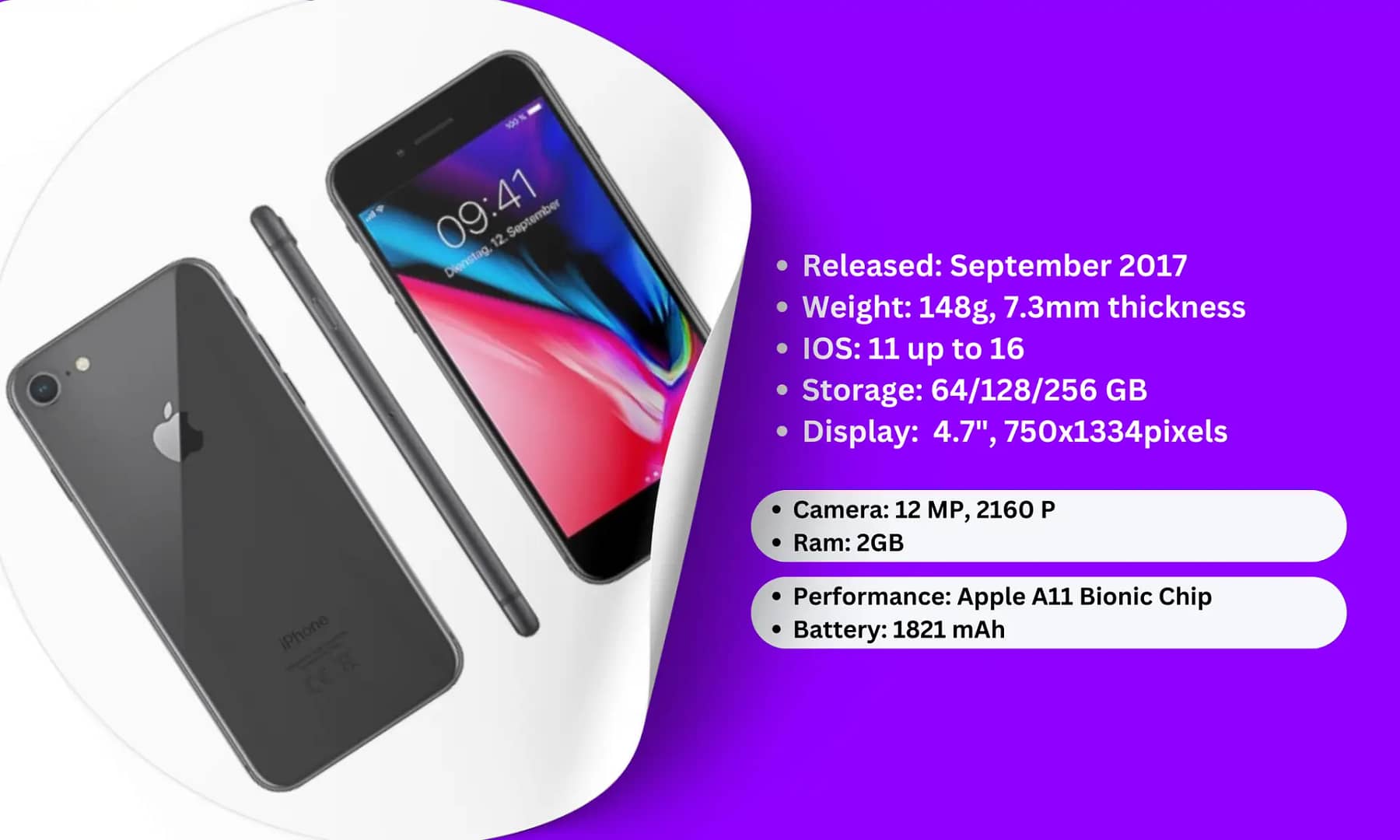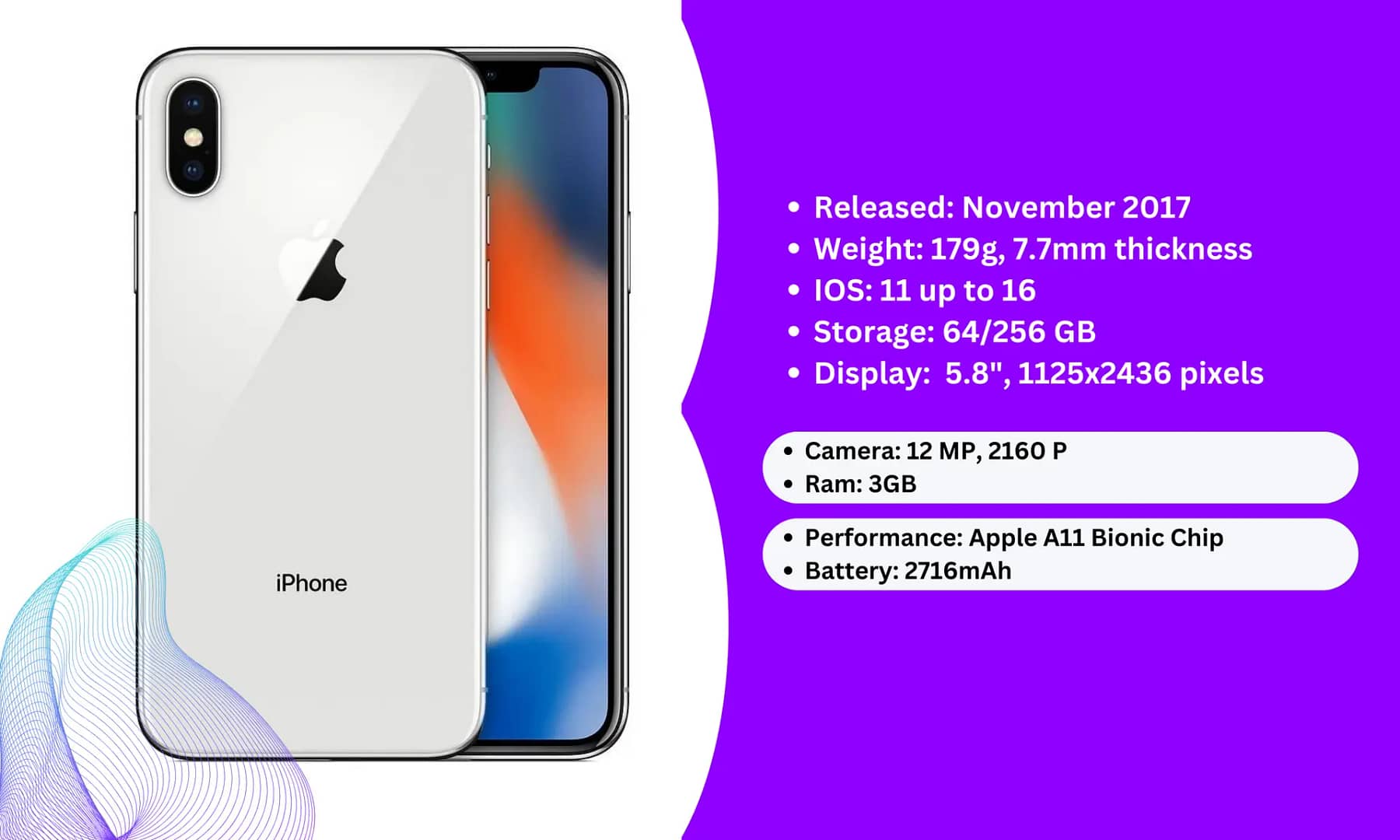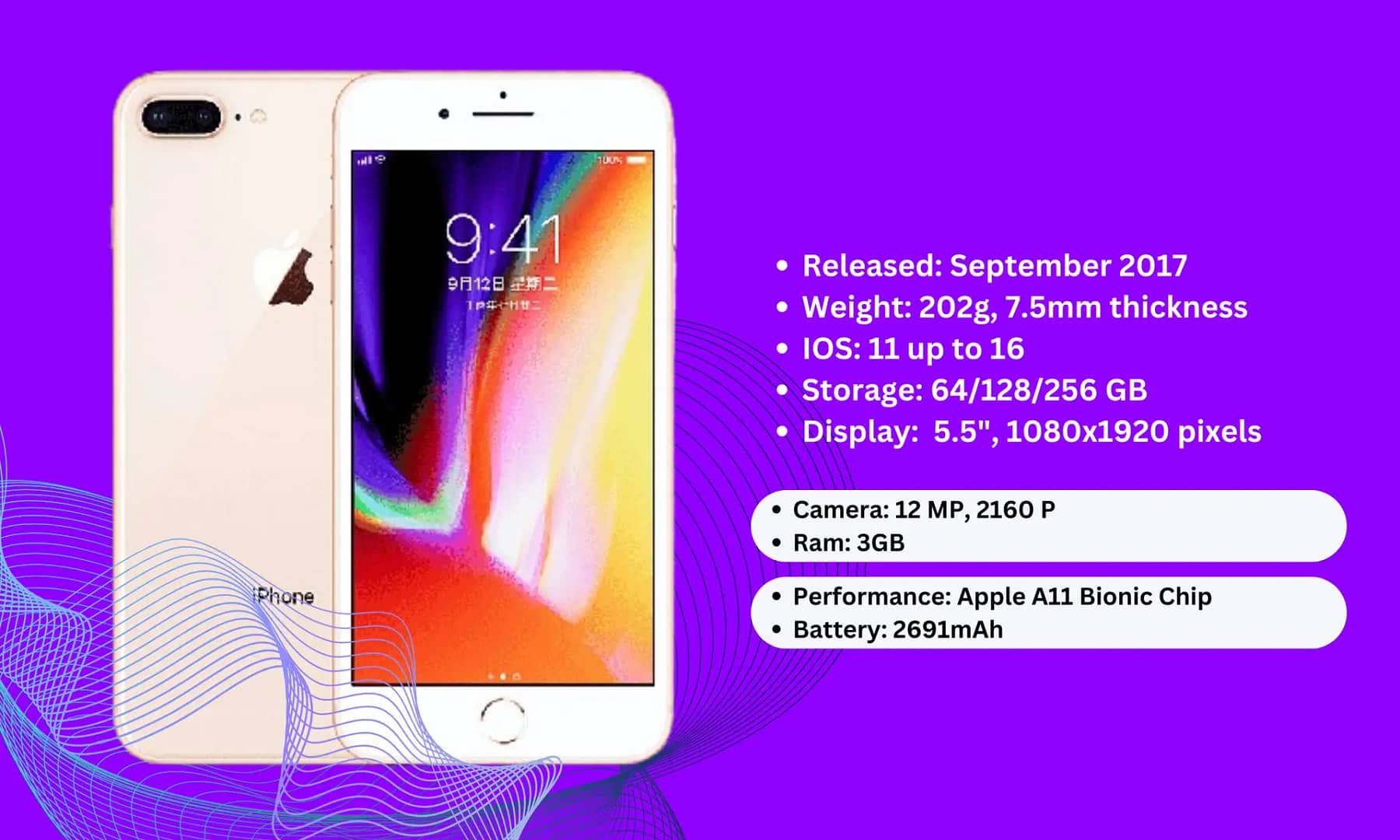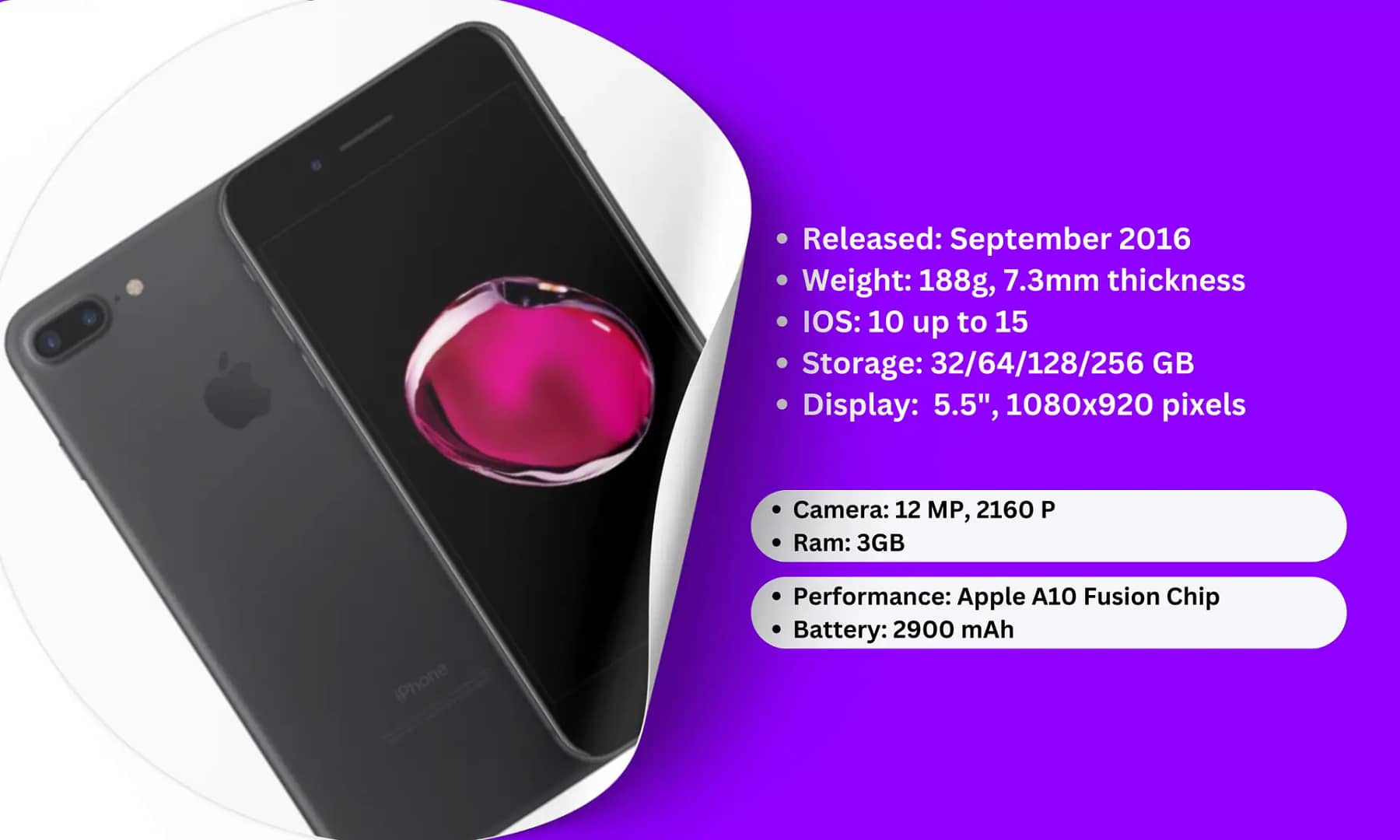Introduction
The iPhone 8 was launched in September 2017, marking something of a milestone for Apple when it came to product lineups. Though carrying the same design as the former iPhone 7, and smaller than its counterpart, the iPhone 8 Plus. It brought in many upgrades to make it a serious upgrade at least in performance and camera capabilities.
With the A11 Bionic chip and an advanced camera system, the new iPhone 8 zeroed in on those who wanted a reliable yet powerful phone. In this article, we have gone deep into the design, performance, and several other critical features of the iPhone 8.
We’ll compare the predecessor iPhone 7 Plus and the successor iPhone X to make the discussion all-inclusive. Be it deciding whether to upgrade or simply wanting a thorough understanding of this phone, we will cover everything in this post. Check Apple’s official page for more insights.
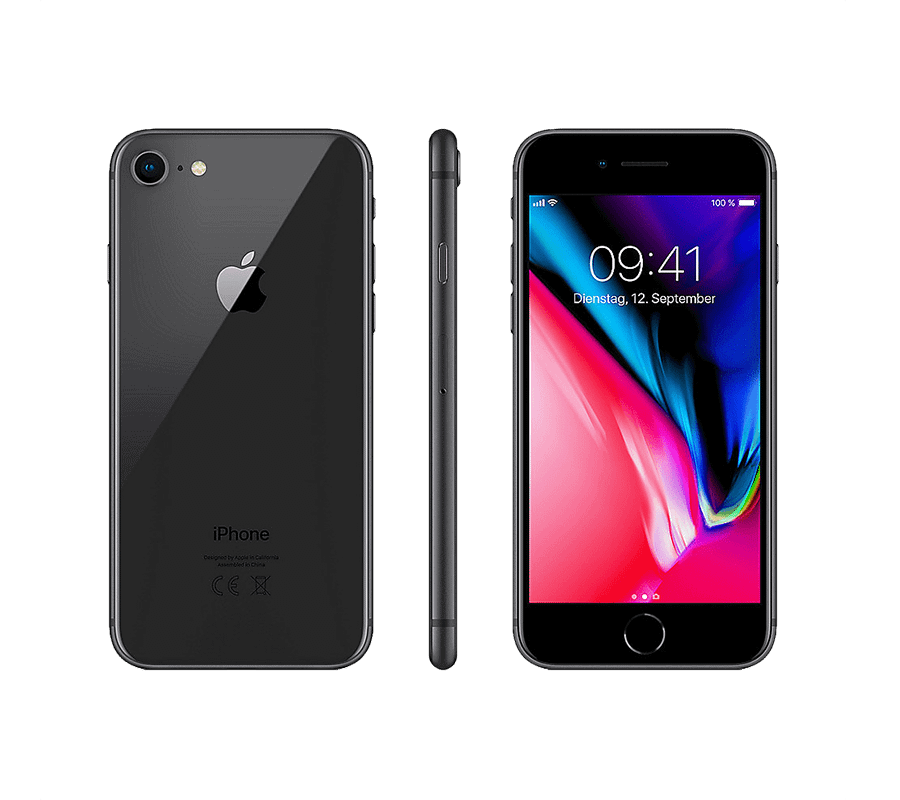
Design and Build Quality
While the iPhone 8 looked much like its forebears, with the same aluminum frame and rounded corners, its back featured glass instead of the aluminum material used in models like the iPhone 7.
This design switch wasn’t merely cosmetic, however; it enabled wireless charging, which makes the iPhone 8 the first across the lineup from Apple to support it. The back of glass, meanwhile, made it more premium and gave it a nice and solid feel in the hand.
Everything felt incrementally more polished than the iPhone 7, though some critics at the time noted that the design was starting to feel a little antiquated, especially in light of the iPhone X’s all-screen look. Meanwhile, the True Tone display added a slight edge to the visual experience, auto-adjusting the screen’s color temperature depending on the surrounding environment.

In terms of ergonomics, the iPhone 8 was compact and easy to handle. The 4.7-inch screen size, while smaller than the iPhone 7 Plus, made it perfect for one-handed use, something many users still appreciate today.
Performance and Battery Life
This was fitted with the A11 Bionic chip-a huge leap in processing power compared to the A10 Fusion chip inside the iPhone 7 Plus. It’s a six-core CPU, and three-core GPU, with up to 70% faster performance in multi-threaded workloads. Whether one gamed, played augmented reality apps, or multitasked, this was seamless airflow-smooth. The iPhone 8 left its rivals in similar categories far behind its wake.

Battery life improved modestly thanks to software optimisation and the energy-efficient A11 chip. Still, next to newer versions, such as the iPhone XR, the battery life of the iPhone 8 felt rather mid-tier, which would last a day given moderate use.
For heavier users, the addition of new wireless charging made it easier to top up without messing with cables. It also came with a surprise – even though it had fast charging support, there wasn’t a fast charger in the box to package, hence not truly giving users the full experience right out of the box.
Despite this, for most users, the performance upgrades were great and noticeable, with the iPhone 8 then being one of the strongest contenders if one asked about speed and efficiency.
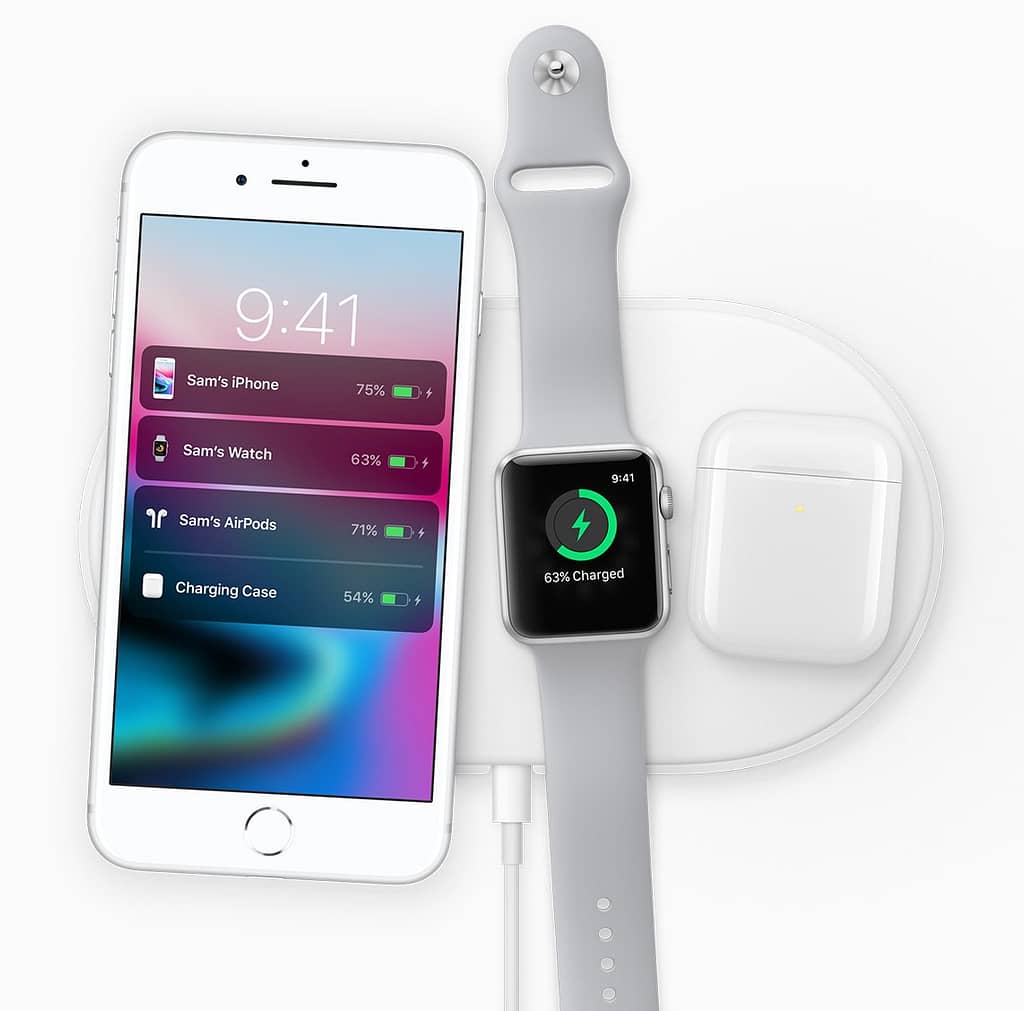
Camera System
Then Apple introduced more enhancements in camera technology when the iPhone 8 was introduced into the market. While it retained a 12 MP sensor in the rear, just like the iPhone 7, it included a larger sensor and improved image signal processor, adding a great deal to the picture quality.
Where the iPhone 8 excelled was in low-light performance: much clearer, more detailed shots than those of the iPhone 7. In everyday shooting, the iPhone 8 proved reliable, with vibrant colors and decent skin tones.

The Portrait Mode, first seen on the iPhone 7 Plus, was even better on the iPhone 8 due to better sensors. It also made further refinements to the frontfacing 7 MP camera, which allowed selfies to be sharper and clearer than before.
Meanwhile, video capabilities were bumped up, too, enabling recordings in 4K at 60 fps for the first time on an iPhone. This feature turned out to be a game changer for content creators who are looking at high-quality video in compact form.

The iPhone 8 Plus had the edge in its dual-camera system, but for those wanting a simpler yet powerful point-and-shoot experience, the iPhone 8 doesn’t disappoint: surprisingly, especially with the new changes in image processing and stabilization, making it a perfect companion on the go for capturing that precious moment.
Display
The iPhone 8 featured a 4.7-inch Retina HD display with a resolution of 1334 x 750 pixels. While this wasn’t the most impressive display in terms of pixel count, it still offered vibrant colors and deep contrasts, thanks to the True Tone technology. True Tone adjusted the display’s white balance based on the surrounding lighting conditions, making for a more natural and comfortable viewing experience whether indoors or outdoors.
Compared to the iPhone X‘s OLED display, the iPhone 8’s LCD might have seemed a bit outdated, but it still provided a sharp and vivid viewing experience. The 625 nits of brightness made it easy to use the phone even under direct sunlight. Whether watching videos or playing games, the display delivered smooth visuals with accurate color reproduction.
One area where the iPhone 8 lagged behind higher-end models like the iPhone X was the lack of an HDR display. While not a deal-breaker for most users, it did mean that content like HDR movies or shows on platforms like Netflix wouldn’t look as vibrant as on OLED screens.

Software and Features
The iPhone 8 shipped with iOS 11, which introduced a range of new features. The most notable was the Augmented Reality (AR) support, allowing users to interact with AR apps seamlessly. The A11 Bionic chip played a key role here, ensuring smooth AR experiences, from games to interactive home décor apps.
iOS 11 also brought changes to the Control Center, which was now customizable, and new features for multitasking and drag-and-drop capabilities in apps like Files. For long-time iPhone users, these updates significantly improved daily workflows. However, the iPhone 8 lacked Face ID, a feature that debuted on the iPhone X, and instead stuck with Touch ID.
Additionally, the iPhone 8 supported wireless charging, thanks to the glass back. It was compatible with any Qi-standard wireless charger, making charging more convenient. Learn more about iOS features.
iPhone 8 Specifications
Feature | Details | Additional Information |
|---|---|---|
Display | 4.7-inch Retina HD Display | 1334 x 750 pixels, True Tone |
Processor | A11 Bionic chip | Six-core CPU, Three-core GPU |
RAM | 2GB | – |
Storage Options | 64GB, 128GB, 256GB | No expandable storage |
Rear Camera | 12 MP wide-angle camera | Optical Image Stabilization, 4K video recording at 60 fps |
Front Camera | 7 MP HD camera | FaceTime HD, Portrait mode |
Battery Capacity | 1,821 mAh | Up to 14 hours of talk time, wireless charging support |
Operating System | iOS 11 | Upgradeable to the latest iOS versions |
Build Materials | Glass front and back, Aluminum frame | IP67 water and dust resistance |
Dimensions | 138.4 x 67.3 x 7.3 mm | Weight: 148 grams |
Weight | 148 grams | – |
Connectivity | Wi-Fi 802.11ac, Bluetooth 5.0, LTE | Lightning port, no headphone jack |
Color Options | Silver, Gold, Space Gray | – |
Sensors | Touch ID, Accelerometer, Gyroscope, Barometer | – |
Audio | Stereo speakers, Lightning EarPods included | No 3.5mm headphone jack |
Charging | Wireless charging, Fast charging support | – |
iPhone 8 Preinstalled Apps
App Name | Description | Category |
|---|---|---|
Phone | Make and receive phone calls, manage contacts | Communication |
Messages | Send and receive text messages and multimedia messages | Communication |
FaceTime | Make and receive video calls | Communication |
Mail | Manage and organize email accounts and messages | Productivity |
Safari | Browse the internet, access websites | Browsing |
Photos | View, organize, and edit photos and videos | Photography |
Camera | Capture photos and videos | Photography |
Maps | Get directions, explore locations, view maps | Navigation |
Weather | Check current weather conditions and forecasts | Utilities |
Calendar | Schedule and manage events, appointments, and reminders | Productivity |
Clock | Set alarms, and timers, and use the stopwatch | Utilities |
Notes | Create and organize notes and checklists | Productivity |
Reminders | Set reminders and to-do lists | Productivity |
Stocks | Track stock market information and news | Finance |
News | Read and follow news articles from various sources | News |
Wallet | Store and manage digital passes, tickets, and payment cards | Finance |
Health | Track health and fitness data | Health & Fitness |
Settings | Configure system preferences and settings | Utilities |
App Store | Download and manage apps from the App Store | Utilities |
iTunes Store | Purchase and download music, movies, and TV shows | Entertainment |
Books | Read and manage eBooks and audiobooks | Reading |
Podcasts | Listen to and manage podcasts | Entertainment |
TV | Watch and manage TV shows and streaming content | Entertainment |
Home | Control and manage smart home devices | Smart Home |
Tips | Get tips and guidance on using iPhone features | Utilities |
Connectivity and Ports
The iPhone 8 features a robust array of connectivity options designed to keep users connected and enhance their experience. Here’s a detailed look at its connectivity and port options. Overall, the iPhone 8 offers a well-rounded set of connectivity options, balancing traditional ports with modern wireless technologies to cater to diverse user needs:
Wireless Connectivity
- Wi-Fi 802.11ac: The iPhone 8 supports the latest Wi-Fi standard, providing faster speeds and better performance compared to previous generations. This allows for quicker downloads, smoother streaming, and more reliable internet connections.
- Bluetooth 5.0: With Bluetooth 5.0, the iPhone 8 offers an improved range and speed for connecting wireless devices such as headphones, speakers, and smartwatches. This version of Bluetooth also allows for more simultaneous connections and reduced power consumption.
- NFC (Near Field Communication): The iPhone 8 includes NFC support for Apple Pay, enabling users to make secure payments with a simple tap at compatible payment terminals. It also supports other NFC functionalities like pairing with certain accessories.
- LTE Advanced: The phone supports LTE Advanced networks, which offer faster mobile data speeds and improved connectivity. This ensures reliable performance when streaming videos, browsing the web, or using data-intensive apps on the go.
Ports
- Lightning Port: The iPhone 8 uses a Lightning port for charging and data transfer. This port is used to connect the device to the charger or to a computer for syncing and backup. The Lightning port also supports various accessories, such as external microphones, adapters, and more.
- No 3.5mm Headphone Jack: Following the trend set by the iPhone 7, the iPhone 8 does not include a traditional 3.5mm headphone jack. Users need to use Bluetooth headphones or Lightning EarPods (included in the box) for audio. An adapter is available for those who prefer to use standard 3.5mm headphones.
Wireless Charging
- Qi Wireless Charging: One of the standout features of the iPhone 8 is its support for wireless charging using the Qi standard. This allows users to charge their phone by placing it on any Qi-compatible charging pad, eliminating the need for physical connectors and providing greater convenience.
Additional Connectivity Features
- GPS: The iPhone 8 includes GPS support for accurate location tracking, which is essential for navigation apps, location-based services, and fitness tracking.
- Dual SIM Support: While not available in the iPhone 8, newer models offer dual SIM support, which allows users to manage two phone numbers on a single device. The iPhone 8, however, does not include this feature.
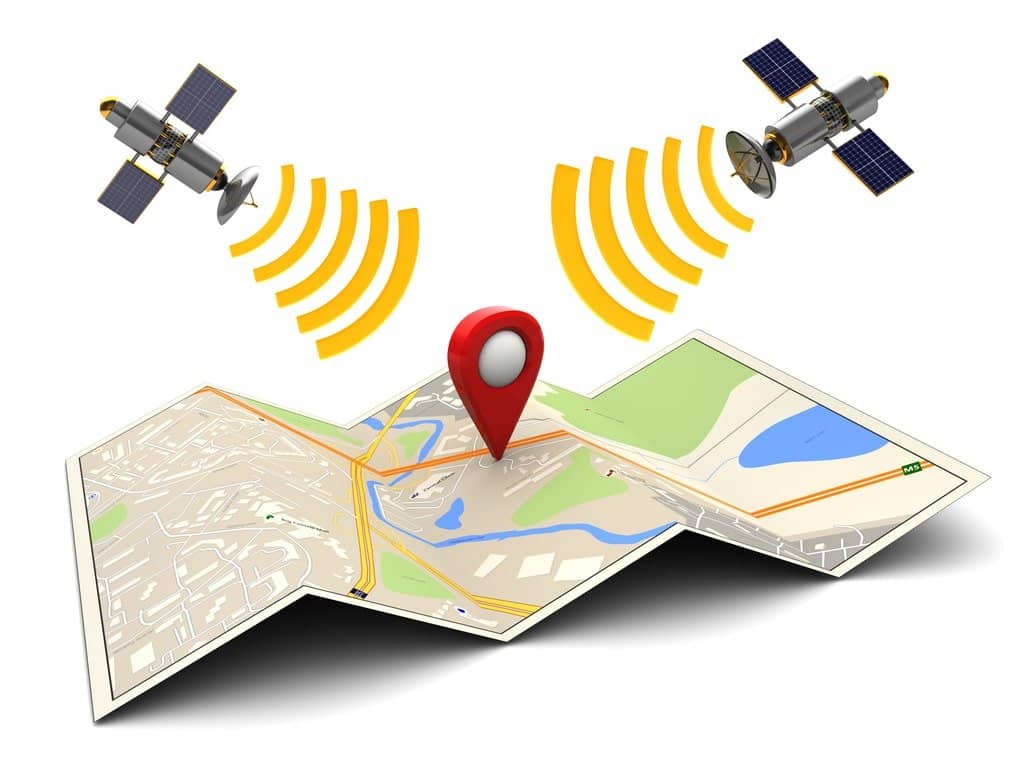
Audio and Accessory Compatibility
- Lightning Accessories: The Lightning port supports a variety of accessories, including Lightning-based headphones, adapters, and docking stations. Users can connect devices such as Lightning microphones or external storage via this port.
- Bluetooth Accessories: With Bluetooth 5.0, the iPhone 8 is compatible with a wide range of wireless accessories, including headphones, speakers, and smartwatches. This ensures seamless integration with various peripherals and enhances the overall user experience.
Durability and Water Resistance
The iPhone 8 boasted an IP67 rating, meaning it was resistant to dust and could withstand submersion in up to 1 meter of water for up to 30 minutes. This level of protection was a step up from the iPhone 7’s IP67 rating, offering more confidence in everyday scenarios like accidental spills or brief submersions.
The glass back, while elegant, was more susceptible to cracks if dropped compared to the aluminum backs of earlier models. Despite this, Apple’s Ceramic Shield technology made the front glass highly durable, with improved resistance to scratches and impacts.
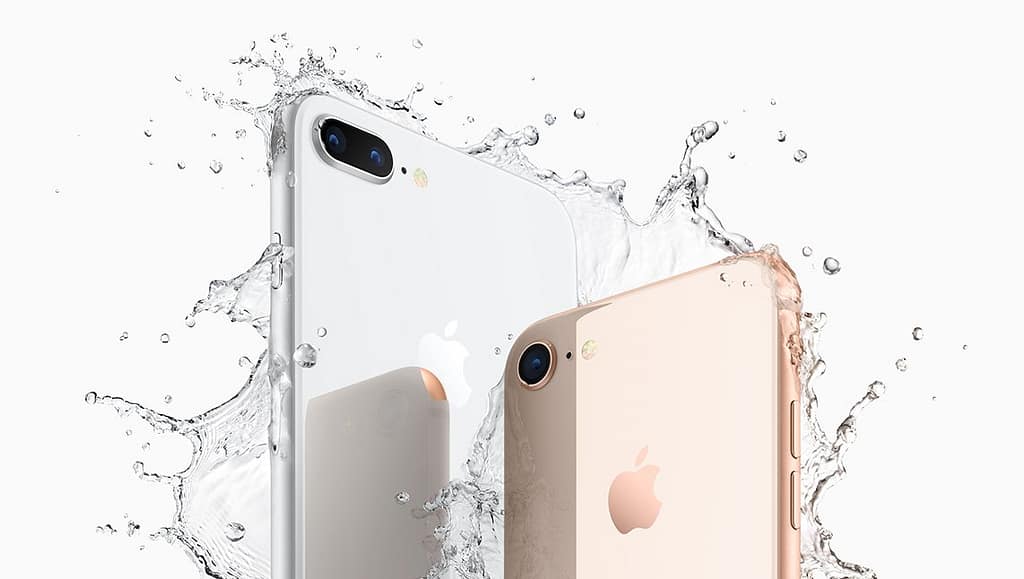
Storage Options and Pricing
The iPhone 8 was available in 64GB and 256GB storage options. At launch, the 64GB model was priced at $699, while the 256GB variant was priced at $849. This pricing positioned the iPhone 8 as a mid-range option compared to the premium iPhone X, which started at $999.
In terms of value, the iPhone 8 provided a solid balance between performance and cost, especially for users who didn’t need the advanced features of the iPhone X. However, with newer models like the iPhone 11 and iPhone 12 now available, the iPhone 8’s price has significantly dropped, offering even better value for budget-conscious buyers. Check current pricing.
Accessories and Ecosystem
The iPhone 8 supported a range of accessories, including the Apple Watch, AirPods, and various wireless chargers. Its compatibility with Qi-standard wireless chargers was a significant addition, allowing users to charge their phones conveniently without cables.
While it did not support accessories like the Apple Pencil (reserved for iPads), it fit well within the broader Apple ecosystem, integrating seamlessly with other Apple devices and services. Find recommended accessories.
User Reviews and Popular Opinions
Overall, the iPhone 8 received positive feedback from users and critics alike. Many praised its performance, camera quality, and wireless charging capabilities. The phone’s incremental improvements over the iPhone 7 were appreciated, though some felt that its design was beginning to look outdated compared to newer models.
Users particularly liked the iPhone 8’s reliability and ease of use, making it a strong choice for those who preferred a traditional design with modern features. However, the absence of a headphone jack and the high price at launch were common points of critique. Read user reviews.



Conclusion and Recommendation
The iPhone 8 represented a solid upgrade from its predecessors, combining a familiar design with improved performance and features. While it may not have had the groundbreaking innovations of the iPhone X, it provided a reliable and powerful smartphone experience.
For those considering an upgrade, the iPhone 8 remains a viable option, especially given its reduced price in today’s market. If you’re looking for the latest technology, you might want to explore newer models like the iPhone 12 or iPhone 13.

